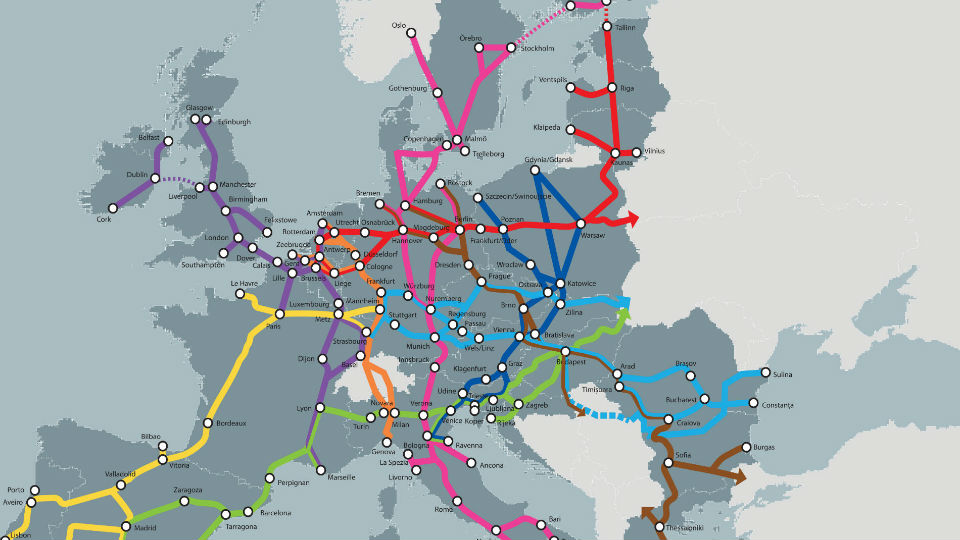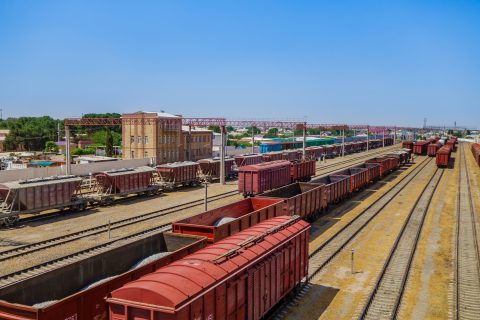Completion of TEN-T core network not possible without EU support

The major challenges of the TEN-T infrastructure network can only be met with a sound mix of funding and financial instruments. The years 2016 and 2017 were successful in that regard, states the progress report on the work done to implement the trans-European transport network (TEN-T). The core transport network of Europe should be complete by 2030, with a lot of projects still on the shelves.
In the years 2016 and 2017, TEN-T received increased funding from the Connecting Europe Facility (CEF), as well as from other EU means. This has surely helped the successful implementation of the TEN-T network thus far, the report suggests. Currently, the implementation complies between 81 and 100% with the Regulation requirements, a set of rules defining what needs to be done.
Not always reality
However, these compliance rates do not always fully reflect the reality in terms of quality or operational functionality of the transport network, the report also concludes. “Indeed, this analysis needs to be put in the context of partly limited technical TEN-T standards compared to the real needs on the ground. These standards might therefore need to be further specified and developed in the upcoming revision of the TEN-T Regulation in order to better capture the actual potentials and limitations of the network.
It also gives a concrete example. While compliance is already reached to a large extent in terms of electrification (89%), track gauge (86%), freight line speed (86%) and freight axle load (81%), this is not yet the case when it comes to freight train length (43%) and especially ERTMS deployment (11%). “These are still lagging behind. A line may be fit for 740m train length but does not have enough sidings to ensure full interoperability in practice.”
Also telling are the compliance levels in certain countries. Take for example the freight line speed, where the parameter is 100km/h. Compliance with this requirement was already at a high 86% per 2017 data. But this is not the case in the Baltic States, Poland and Bulgaria. For example in Poland, the average speed of an intermodal train is 31.7km/h, and of a conventional freight train 25.5km/h.
North-Sea Baltic Corridor
A good look in the kitchen is the new work plan for the North-Sea Baltic Corridor. Fresh from the press, this was presented at the RailFreight Summit in Poznan by Izabela Kaczmarzyk, consultant for the corridor that runs through Finland, Estonia, Latvia, Lithuania, Poland, Germany, the Netherlands and Belgium.
In the pipeline for this corridor are 657 projects (as of October 2019) amounting to 110 billion euros. These include 68 “additional projects” amounting to an estimated 488 million euros to achieve compliance with TEN-T requirements. “This mainly relates to clean fuels, bridge height, train length of 740m, terminal accessibility and 100 km/h line speed for trains on freight lines. 337 projects are planned to be realised by 2030 and 152 projects with the total value 39 billion euros are contributing to the compliance with the TEN-T Regulation”, she explained.
Text continues below the image

What is next?
The progress report is brought out for every two years and although outdated by the time it is published, it gives a clear indication of the level of implementation. In the meantime, work is underway to revise the current TEN-T Regulation. The progress report and respective work plans of each of the corridors help shaping this revised regulation. A possible proposal for a revision would follow by 2021. This is needed because, as EU Transport Commissioner Adina Vălean explained in June, new developments not foreseen when the regulation was formed call for upgrading of some features of the network.
“The design of the core network, strategically the most important part of the TEN-T, will remain as it is. We are not looking for a revolution and we have already made a lot of progress. However, certain projects are delayed and risk missing the 2030 completion target. Extending this deadline is not an option. Reducing ambition neither.
“The only way forward is instead to strengthen the mandatory nature of Member States’ obligations, and to reinforce EU-level instruments and the governance of the network, which proves every day to be more important”, she concludes.
You just read one of our premium articles free of charge
Want full access? Take advantage of our exclusive offer





